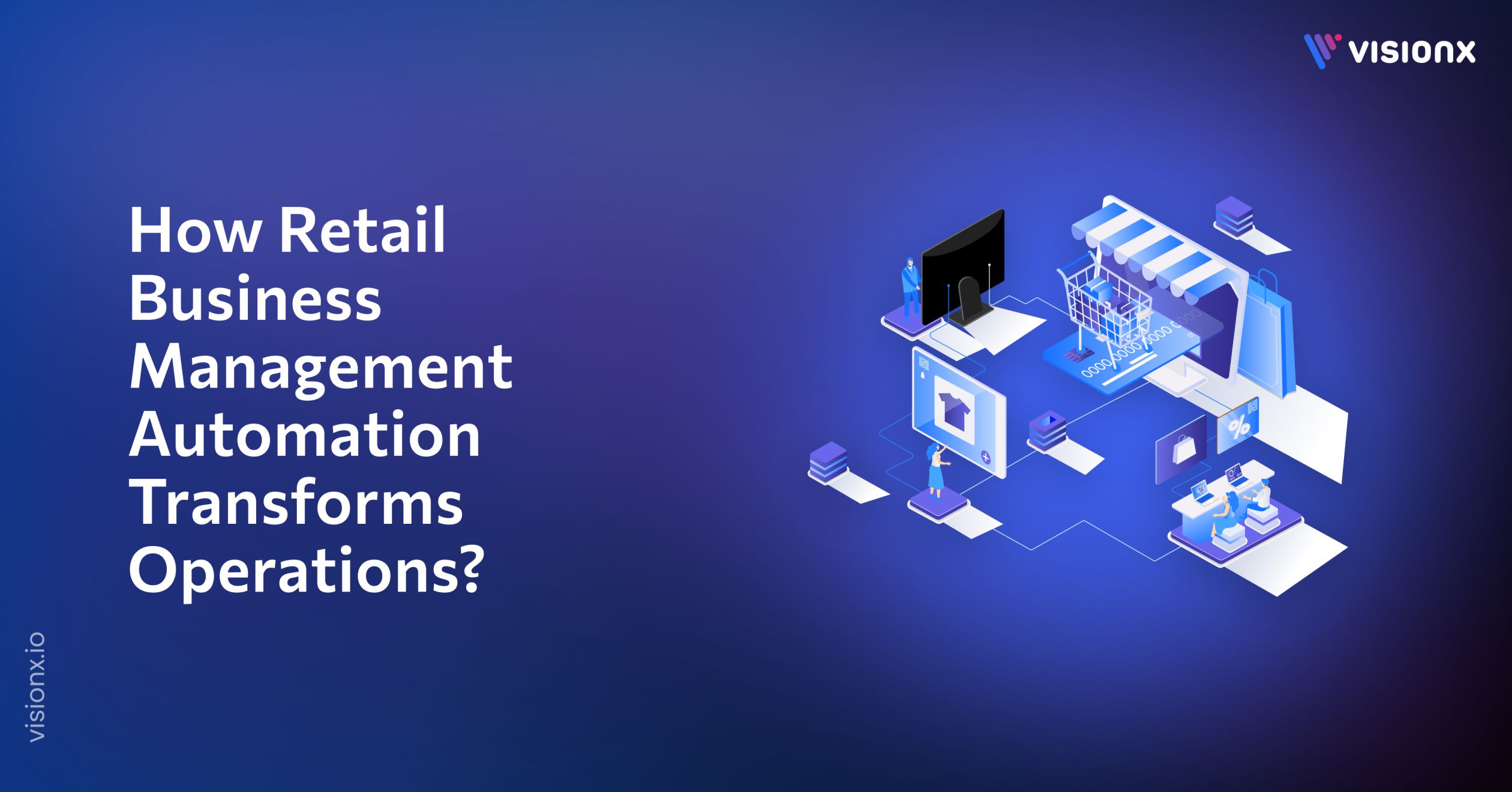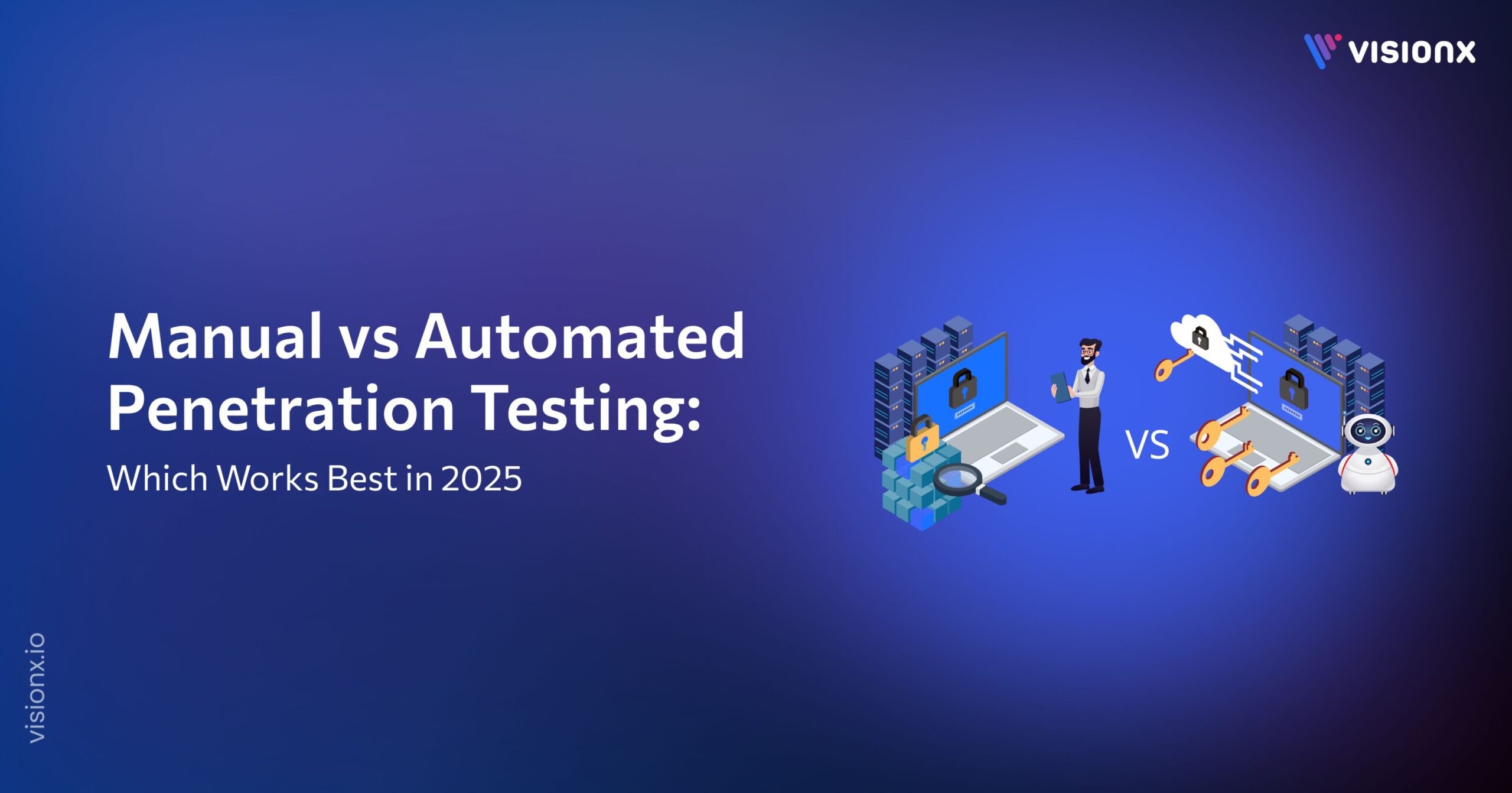Are you and your team stuck with endless spreadsheets? The constant manual work of stock counts and reorders can take up all your time. This leaves a little room for what matters most, like help for customers or plans for sales growth.
Over time, this approach slows growth and creates new challenges:
- Higher probability of errors
- Wastage of time
- It costs you extra money
At some point, every retailer faces a choice. Either they have to accept the old manual way of doing things, or they have to find a better one.
The answer lies in a profound transformation in the way you manage and operate your business. It is called Retail Business Management Automation. This automation in retail industry is a complete system that connects your entire operation. The global retail automation market is forecasted to grow from USD 30.51 billion in 2025 to USD 44.3 billion by 2029, as retailers seek to simplify inventory management and enhance customer experience.
That’s exactly what this article aims to clear up. You’ll see how automation in retail connects your entire operation from stockroom to sales floor and how it can also boost profits, efficiency, and customer satisfaction.
What is Retail Business Management Automation?
Retail business management automation is the use of advanced technology and artificial intelligence to automate and integrate the core processes of a retail business. It handles tasks like tracking stock, sales, and customer data. This approach turns separate manual jobs into a single, efficient automated business model.
The key differentiator is evidently its centralization. A proper Retail Business Management Automation solution acts as the central nervous system for your entire store. It connects all your data and retail business process flows into one retail business management system. This creates a single source of information for your operations.
A robust Retail Business Management Automation platform unifies these following core components into one retail store management system:
- Point of Sale (POS) processes every transaction and captures sales data.
- Inventory Management tracks stock levels across all locations in real time.
- Customer Relationship Management (CRM) builds profiles to track purchase history and preferences.
- Employee Scheduling creates staff rosters based on forecasted store traffic and sales data.
- Procurement and Purchasing generate purchase orders to maintain optimal stock levels.
- Analytics and Reporting turn all your operational data into clear, actionable insights.
Why Retailers Are Adopting Retail Automation?
The retail automation market is growing because store owners face real pressures. They need solutions that surely work. Retail Business Management Automation provides direct answers to their biggest challenges. According to a report, 85% of retail companies have already adopted digital transformation strategies, including automation of core operations like inventory and supply chain management.
- The Need for Accurate Data: Manual processes are full of human errors. This affects stock counts and financial reports. Automated systems create a single, reliable source of information for the entire business. This accuracy is essential for making good decisions.
- Meeting Modern Customer Demands: Shoppers now expect a smooth and personal experience. They’re looking for products in stock, along with deals that resonate with them. Due to automation in the retail sector, there is an opportunity for stores to personalize at this level. It allows stores to address the needs of these new buyers.
- Maximizing Team Productivity: Stores are increasingly tasked to do more work without more people. Retail automation takes care of some of the repetitive and time-consuming tasks that bog down a team. This allows employees to do work that is more valuable, such as serving customers directly and generating sales.
In simple words, retail automation companies offer practical tools for today’s problems. Adopting Retail Business Management Automation is a logical step for any business that wants to operate efficiently and stay competitive.
6 Key Areas Revolutionized by Retail Business Management Automation
These are the six key areas where automation in retail creates real impact on everyday retail business process flows.
1. Inventory and Supply Chain Management
The traditional way meant manual counts and paper lists. This method was very slow and often wrong. It led to empty shelves or too much stock.
The retail store automation uses a smart inventory management system. This system tracks every item in real time. It also connects directly to your point of sale. Your stock levels update with each sale made. This automation in retail also extends to supply chain management. The system can alert you when it is time to reorder. It is a core part of modern retail business process flows.
You will see a direct reduction in excess stock and fewer empty shelves. This control saves money and makes customer service faster. Your retail operations become evidently reliable and predictable.
2. Smart Purchasing and Procurement
Before this transformation in the retail sector, you might have relied on a gut feeling to place orders. This impulsive decision-making often results in costly errors.
Retail business management automation provides valuable insights into your purchases through data analysis. A retail business management system analyzes sales trends to inform strategic decisions. It then suggests optimal order quantities. This retail marketing automation removes the risk of human errors in calculation.
This data-driven approach leads to a more efficient use of your capital. You buy what you know will sell. This improves your cash flow and reduces storage costs. It is a smarter way to manage your retail business.
3. Customer Experience and Engagement
The standard method employed a broad, generalized approach. Every customer received the same treatment regardless of their preferences, purchase history, or behavior, which often led to missed opportunities for engagement and lower customer satisfaction.
Business process automation in retail industry personalizes the entire customer experience. Retail marketing automation tools use purchase history. These automated systems can recommend tailored product suggestions or reminders based on the customer’s preferences. This direct engagement helps meet the expectations of modern clients.
Personal touches build stronger customer relationships and loyalty. This focus on the individual boosts customer satisfaction and encourages repeat business.
4. Employee Management and Empowerment
Managers used to build schedules with pen and paper, which was a time-consuming task that often led to staff conflicts.
Retail business management automation uses automation software for fair scheduling. The system takes into account availability and sales forecasts and frees up managers for more important work. Employees also have access to tools that allow them to check their schedules and request swaps.
Your team becomes more empowered and productive. Staff spend less time on admin and more time with customers. The use of automation in retail improves morale and the quality of customer support.
5. Financial Management and Reporting
Manual data entry into spreadsheets took time and usually led to errors. This process was slow, created delays, and made it harder for teams to keep track of stock or sales in real-time.
Retail automation creates accurate reports automatically. Your retail business management system collects all sales and expense data in one place and gives you a clear financial picture in real time. This automated approach not only saves time but also acts as a robust system for financial control and anomaly detection. Through this automation, you can indeed see your performance instantly without the need for manual work.
The result is better financial control. You can spot trends, track margins, and make informed decisions quickly. This clarity is vital for any retail business.
6. Sales and Marketing
Marketing once worked like a broadcast, where messages went out to everyone with little control over who actually paid attention. And you hoped your message reached the right audience.
Retail marketing automation enhances the precision of marketing efforts. Retail automation also enables segmentation of your audience. You can create campaigns for customers who bought specific items. This targeted approach is more effective and costs less.
You get a better return on your marketing spend. You can also communicate with customers who are already interested. This drives sales and strengthens your brand in a competitive retail automation market.
Benefits of Retail Business Management Automation
Adopting a Retail Business Management Automation system delivers clear financial returns. You can measure its success through these key improvements to your bottom line. Here’s how automation in retail turns operational efficiencies into actual profit.
Dramatic Time Savings
You can reclaim many hours each week which was lost to manual work. Your team can reduce the time spent on administrative tasks, such as counting stock and making schedule changes. This allows a focus on tasks that drive sales and improve customer service, which directly supports customer satisfaction.
Increased Revenue
Retail marketing automation increases sales through personalized offers that shoppers like and connect with. Fewer stockouts mean you do not lose a sale due to a stockout. Improved shopping experiences can also help improve retention of customers, which creates a stable revenue base for a retail business.
Significant Cost Reduction
You can save money on labor by optimizing your staff schedules to align with store traffic. By holding less excess inventory in your back room, you can lower your inventory carrying costs. And you can reduce losses from theft or paperwork mistakes, which keeps your margin protected.
Enhanced Accuracy
Automated systems nearly eliminate human errors in data entry and calculations. Your information for orders, counts, and prices becomes reliable and trustworthy. This accuracy builds a solid foundation for your entire retail business and supports better decision-making.
Scalable Growth
The efficient processes you establish for one store can be replicated easily. Retail business management automation simplifies the opening of additional locations, allowing you to avoid the operational challenges that often arise. This approach enables your business to expand in a stable and efficient manner.
Your First Steps Towards an Automated Retail Operation
Introducing automation into the management of your retail business is a thorough process. There are several essential steps that can help create an effective and stable framework on which your new system can be built, allowing your transition to run much more smoothly and efficiently while developing your retail business.
Step 1: Audit Your Pain Points
Look at where your business loses the most time. Is it manual inventory counts? Is employee scheduling a constant struggle? Find out the tasks that make your team slowest. This gives you your starting point in your search for solutions.
Step 2: Define Your Goals
Decide what a successful transformation means for you. Set a clear target. You might want to cut your time spent on inventory reports by 80%. A specific goal helps you measure the value of your new retail business management system.
Step 3: Research and Choose a Platform
Look for a system that connects your main pain points. You want an all-in-one retail store management system. Look for options from various retail automation companies. Focus on the one that offers a single solution to inventory, sales, and customer management.
Step 4: Plan for Implementation Budget for the Project
Don’t forget to include the cost of the automation software, any hardware needed, as well as the time spent on training. An effective plan will help with the transition.
Step 5: Train Your Team and Go Live
This automation is a change for your staff. Frame the new retail business management automation as a tool to help them. Show how it makes their jobs easier. Get them excited about the benefits. Then, start using the system.
Future of Retail Business Management Automation
The future of Retail Business Management Automation will be characterized by enhanced intelligence. Here is what the future of Retail Business Management Automation looks like.
- AI and Predictive Analytics: These tools will be the foundation of new systems. They will provide very accurate demand forecasting, fine-tune inventory, and dynamically reduce waste. Automation within the retail industry now emphasizes predicting and anticipating, and is less about reacting and responding.
- The Internet of Things (IoT): Connected IoT devices will furnish a constant flow of real-time information. Shelves and warehouse, from Wi-Fi-enabled scales, will read levels and send alerts about stock levels without any involvement from staff. This allows for a truly live perspective on your retail and operations.
- Robotics and Automation: Various types of robots will automate repetitive physical tasks in stockrooms and fulfillment centers. The work robots perform, in addition to automated systems for data recording, means your backend would work incredibly efficiently.
How is VisionX Transforming Retail Operations Through Automation?
VisionX builds smart, custom Gen AI solutions that automate complex workflows. We use AI and machine learning to create intelligent software for the retail world.
Our approach connects every part of your business to deliver:
- Smart Workflows automate your core functions, eliminating your manual processes.
- AI-Enabled Insights convert your data into actionable growth strategies.
- Seamless Integration connects your systems, allowing you to manage all your core processes in one system.
It means that now you will be able to automate tasks, predict trends, and make quicker and more intelligent decisions. We help you do your work more efficiently, reduce costs, and better serve your customers. Convert data into the most powerful tool in your arsenal.
Are you ready to find out what a tailored automation solution could do for your business? Let’s talk.
FAQs
What is retail automation?
Retail automation uses technology to handle store tasks. It covers software for inventory and sales, plus hardware like self-checkout. The goal is to make operations smoother and reduce manual work.
How to automate your retail business?
Start with your biggest pain point. This is often inventory or sales reporting. Find a platform that addresses this need directly. A good system will grow with you and connect to other areas of your business later.
Which retail processes can be automated?
Many daily tasks can be automated. Common examples include inventory tracking, purchase order creation, staff scheduling, sales reporting, and customer marketing emails. Any repetitive, rule-based task is a good candidate.
What is automation in business management?
It is the use of software to manage core operations. In retail, this means a central system that handles data from sales, stock, and customers. It gives you a unified view to make better decisions.
Is retail automation suitable for small businesses?
Yes. Many solutions are built for small and mid-sized stores. Automation helps small teams compete by making them more efficient. The key is to choose a system that fits your budget and specific needs.


